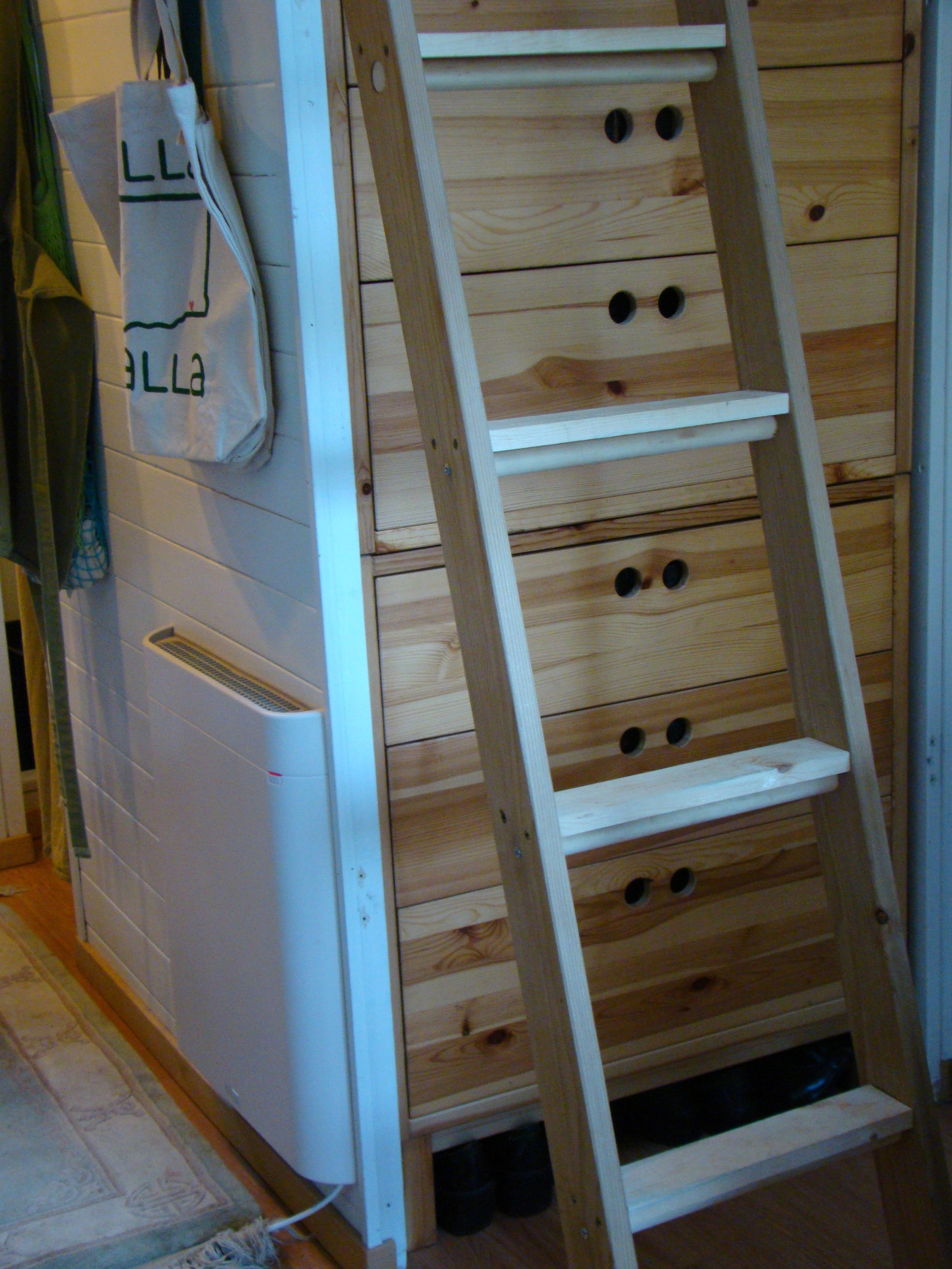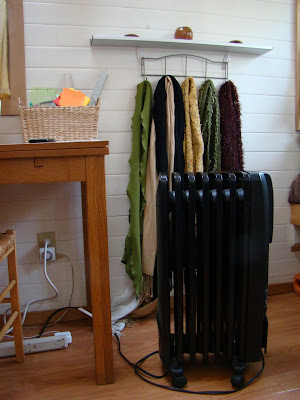Recently a couple people have asked for updates about how the tiny house and I have fared through the Portland winter. "Winter?" I think. "What winter?"

There have been cold days. There was, for instance, the day that sleet froze on my skylight, making beautiful crystalline patterns when the full moon shone through it.
I used the oil radiator heater in addition to the wall-mounted heater several times a week during December and January. Twice when I was using the oil radiator heater I tripped the circuit breaker because I made the mistake of also using my electric water kettle which is electricity intensive. The irony is that both times I turned on the oil heater because I had company coming and wanted to make the place nice and toasty for them even though I would have been fine just wearing my down vest and slippers if it had just been me at home. It was when I decided to make my company a cup of tea that I lost all power which meant all heat and light. In trying to make everything warm, bright, and cozy I made the tiny house dark and cold. I couldn't find the circuit breaker in the big house, so I boiled water on the propane stove, bundled my company up in blankets, and lit some candles. I have that little propane boat heater, too, but without the electric fan it's pretty useless. I turned it on for the psychological warmth even though it didn't do much good. Fortunately, one of my visitors is a fellow tiny house dweller and the other is a nomad and minimalist so they were both good sports about candlelit conversation. The first time I maxed out my electrical capacity I hadn't realized how I'd done it, but the second time I figured out where the circuit breaker is located and I learned to make a choice between heating the space and heating water in a hurry. I started boiling water on the stove more often. It was an easy adjustment.
Throughout February I've been back to using the Envi wall-mounted space heater as my sole heat source and I've been very pleased with it. It's silent, has a sleek, slim design, and has kept my house at a pleasant temperature. I do keep it on 24/7 because I find that if I turn it off the house cools down enough that it takes a while to get all the surfaces warmed up again. But here it is February and there are times that it's been so warm I've been able to turn it down a notch. In the next two months I'll be weaning myself off of it.
Winters here are so mild compared to what I'm used to that it's amusing to me that winter is already on its way out. I was delighted to discover a front yard in my neighborhood completely covered in crocuses while I was biking home from visiting another tiny house dweller this afternoon. I always think of my friend Claudia when I see the first crocuses of the year. When we were in college she helped call my attention to crocuses, teaching me that they are a harbinger of springtime to come. Next: daffodils. Then: tulips. Stay tuned. The world is about to become a lot more colorful!
Claudia's attention to natural cycles and her giddy appreciation for little joys are two of my very favorite things about her. This winter I have found myself thinking of Claudia frequently, imagining how much she would like being in a house so small that the rest of the world surrounds her. We have had several storms that have lashed winds against the tiny house, sending driving rain through the screens and onto the window panes. When the bluster really picks up momentum the house rocks, ever so slightly, and I imagine myself on a sailboat.
It's fun to watch the way that the sunlight moves around the house throughout the day, first peeping in through the eastern windows, then the southern, casting rainbows across the sleeping loft from the prism that hangs in the window there. The evening sun spills in through my western window, above my desk. The days that I focus on my internship instead of classes I luxuriate in an afternoon nap in the sleeping loft and then enjoy the sunshine's company as I type up reading notes or a blog post.
On clear nights I love falling asleep to the stars shimmering through the skylight in my little wooden ceiling. Mornings that I wake up to the drum of rain on the skylight I grin and hit the snooze button, knowing that I'm off the hook for riding my bike to campus. I have twenty more minutes before I need to get up, make my tea, and catch my bus.










 Last fall I designed my tiny dream house in a workshop called
Last fall I designed my tiny dream house in a workshop called 
 I've started a paid internship with a planning organization so my schedule is very full these days. It makes me really appreciate the tiny house when I'm able to be home. I love sitting in the window seat reading for classes with my cat on my lap, cooking hearty food in the little kitchen, or sleeping in the snug loft.
I've started a paid internship with a planning organization so my schedule is very full these days. It makes me really appreciate the tiny house when I'm able to be home. I love sitting in the window seat reading for classes with my cat on my lap, cooking hearty food in the little kitchen, or sleeping in the snug loft.


